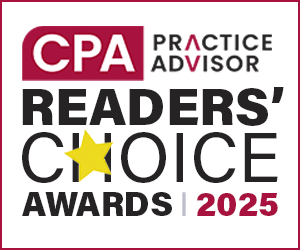From the Aug. 2009 Issue
With a primary focus on servicing clients and chargeable hours, many firms seldom have adequate time to focus on identifying optimal production practices, standardizing them, and providing training to all their firm members. The current “soft” economy, coupled with the natural production slow down most tax and accounting firms experience over the summer, provides a unique opportunity to take a look at firm processes and actually do something about improving them!
Most of us have been through one or two tough economies before, and we know that the eventual turnaround provides huge opportunities for those who are well positioned to take advantage of them. With additional staff resources currently available, firms should commit time every week to look at their workflow processes, identify opportunities and improve upon them on a scheduled, programmed basis.
TAX WORKFLOW
Going “less-paper” in the tax area has created opportunities to move information more efficiently throughout the firm and access documents from any place and at any time. Digital versions of documents must be managed as effectively as their paper counterparts, and workflow tools integrated with higher-end document management systems track the status and location in lieu of individuals keeping manual lists or spreadsheets.
In addition to the integrated tools within Thomson GoFileRoom, Doc.It, Conarc, Acct1st and other document management products, there are dedicated tax workflow tools such as those from XCM Solutions, LLC, which works with CCH Document and even Windows Explorer, providing a digital dashboard to each firm member of the status of all tax returns and their supporting documents.
TAX PORTAL
Transferring physical documents to and from clients takes a remarkable amount of manual handling, which can be streamlined by using digital documents via a web-based portal. Most higher-end document management applications and website content providers have secure portal sites where both firms and clients can upload and download files instead.
These portals streamline productivity as they notify the recipient almost instantaneously when a new document has been placed or updated within the portal, which can then be saved electronically, without having to go through any printing or scanning. Utilizing portals that are integrated with the firm’s existing document management system makes it easier to train your personnel how to use these tools.
But for firms without a document management application, certain website content providers offer cost-effective and reliable portal solutions as part of their overall service. You can learn more about website content providers in The CPA Technology Advisor’s article on website builders for accountants at www.CPATechAdvisor.com/go/2193 and at www.websites4accountants.com. You can also read more about portals at www.CPATechAdvisor.com/go/2334.
ORGANIZER PRODUCTION
When creating tax organizers this fall, firms should utilize the custom cover letter feature and integrate the firm logo so that the organizer prints out all of these documents in their entirety, rather than having to hand-collate additional documents, checklists and instructions. By using window envelopes, firms can eliminate the matching of labels with the organizer and ensure they are mailed to the right client. These firms can also deliver lost or missing organizers via a tax portal electronically.
Please note that while there are digital organizers available online that can import the data into the firm’s tax program if the client fills them out, my research indicates that the majority of firms that have utilized these have not yet seen a profitable ROI and have not standardized on their usage.
SCANNING TOOLS
Today’s production scanners and front-end scanning applications streamline the upfront organization of client source documents by allowing the majority of them to be organized electronically, utilizing administrative personnel instead of higher-priced professional staff. Firms should begin implementing tools such as Thomson Reuters ScanFlow and TaxSort, SurePrep 1040SCAN, Copanion GruntWorx/Intuit eSort, CCH ProSystem fx Scan, or CCH Small Firm Services Scan&Fill now so they will be positioned to use them optimally during the next busy season.
All these products are on the cusp of not only recognizing the documents, but also capturing standard data from W-2s, 1099s, K-1s and brokerage statements and placing them into the tax application, which will save time on keying and verifying information in the future. The real benefit to firms in the future is that between one-third and one-half of the tax return data will be entered and verified before the review process begins, which will save firms time where they traditionally are the most overwhelmed. (See www.CPATech Advisor.com/go/2412 for more information about this topic and available products.)
DIGITAL BILLING
Top time & billing systems allow for seamless daily time entry, posting and on-screen billing, but then firms print out and mail the invoice on a month-end basis, which takes more manual handling and delay. Firms should look to create digital invoices and deliver them via a portal or secure email with client projects. Many practice management and time & billing products allow this to be completely automated through the emailing of a PDF to the client’s accounts payable person. With everyone concerned about collections this summer, daily billing and credit card payment capabilities will streamline this, as well, so there will be a huge amount of interest in implementing “hotel” type billing.
ACCOUNTING INTEGRATION
Most firms today are using an audit document container application to organize their files, but they may not be optimizing the other products within their vendor’s application “suite.” Tax groupings should be utilized within the audit binder so that the required tax data can be easily exported to the tax return. Using the same fixed asset product within your tax and audit suite will also streamline the import of depreciation information without rekeying. While no one makes money in the short run switching depreciation products, in the long run it will pay off as data does not have to be rekeyed or reconciled.
AUDIT UTILITIES
Firms still doing manual confirmations know there is a significant amount of handling and follow-up required, and many banks are no longer taking calls from auditors. These confirmations can be automated via web-based tools such as Capital Confirmation (see page 16) and AuditConfirmations (see page 13), which are easy for audit teams to use even though they spend most of the time in the field. For sampling client data and performing analytic procedures, many firms still test data manually. Since most firms have Excel expertise, and most accounting applications will export natively to an Excel file, this becomes the natural meeting point for auditing via digital means on the computer.
To assist with more complex analysis and extractions, tools such as ACL and CaseWare IDEA have long been utilized, but an application called ActiveData brings many of their high-end capabilities to an Excel platform for a fraction of the cost. With the ongoing transition to Excel 2007, which can handle files with more than one million rows, larger and larger files can be exported, making this an attractive competitive product that firms will actually use.
EXPENSE MANAGEMENT
For completing expense reports, many firms still utilize physical or Excel spreadsheets that must be rekeyed into the firm’s practice management or time & billing systems. Today’s practice management tools allow for the expenses to be entered directly by the employee who would then utilize the form from time & billing for attaching receipts and getting approval. More advanced firms scan receipts and route them electronically. For paying expense reports, firms should include them within payroll (direct deposit) as non-taxable items so they don’t have to print, deliver and track these miscellaneous checks … and so the auditors don’t have to take the time to run to the bank.
WRITE-UP OPTIMIZATION
Most firms today still do a fair amount of write-up work, but one of the biggest hassles is dealing with transferring files back and forth, often times with physical media such as CDs or USB drives that must be disposed of. In addition to using portals to transfer files, firms should push to not move these files at all, and instead connect directly into the client’s system with remote access tools such as GoToMyPC, LogMeIn, WebEx and Intuit.
As previously mentioned, the current business climate is providing a unique opportunity to take a look at our practices, and such an opportunity may not come again for a long time. Firms should take this time to work “on” their practice rather than “in” their practice, and everyone will be better off in the long run.
– – – – – – – – – – – – – – – – – – – – – – – – – –
Roman H. Kepczyk, CPA.CITP is President of InfoTech Partners North America, Inc. and works exclusively with accounting firms throughout North America to optimize the utilization of their accounting applications and workflow in every aspect of their practice. He can be contacted at roman@cpata.com.
Thanks for reading CPA Practice Advisor!
Subscribe Already registered? Log In
Need more information? Read the FAQs




